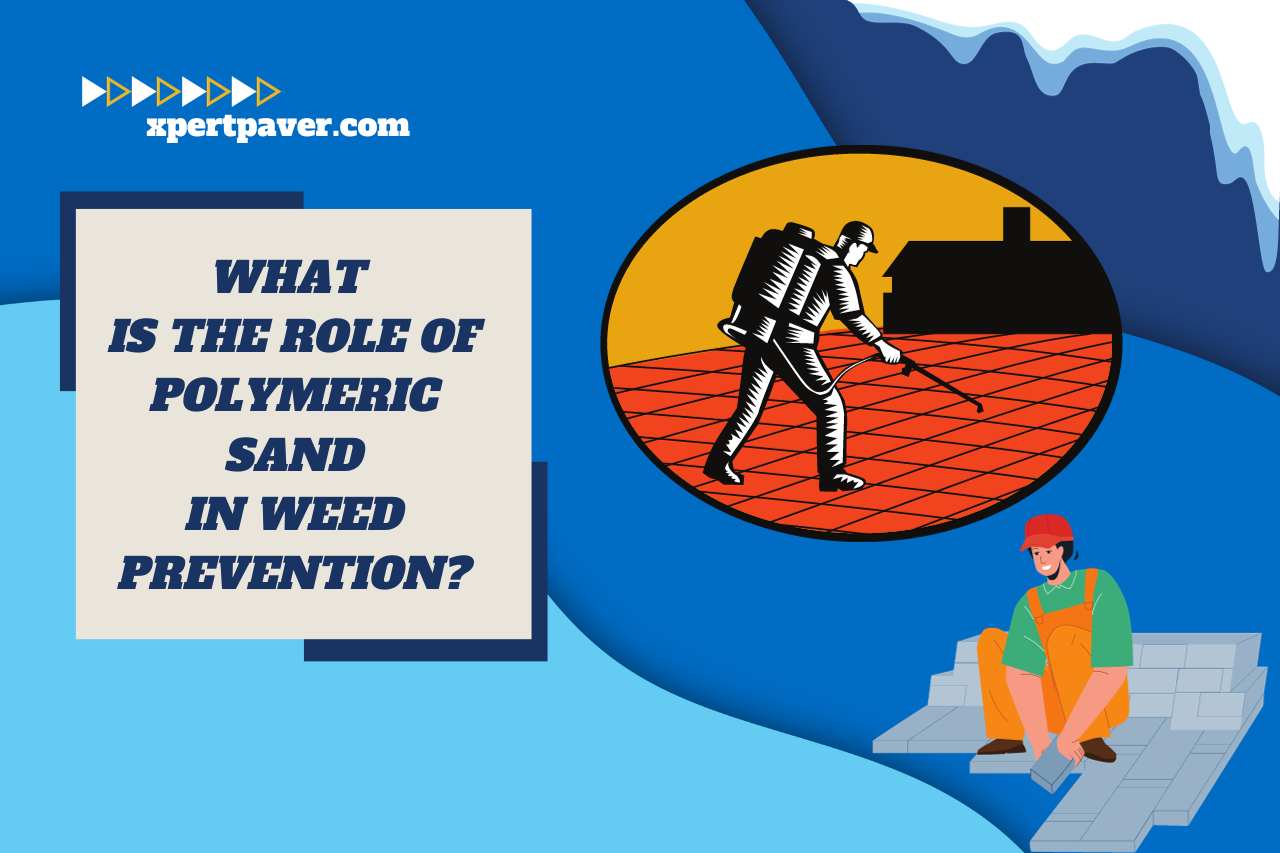The topic “Does paver sand prevent weeds?” is frequently asked by homeowners like us who want to keep our patios and walks spotless. Paver sand plays a significant role in weed prevention, but its effectiveness often depends on various factors. This article delves into the mechanisms through which paver sand combats weed growth, explores the power of polymeric sand, and provides you insights on maximizing your weed control in your outdoor spaces. Join us as we uncover the truth about paver sand and its capabilities in ensuring a weed-free outdoor environment.
Does Paver Sand Prevent Weeds?
Yes, paver sand can help prevent weeds, but its effectiveness largely depends on the type of sand and its proper application. Paver sand, especially the polymeric variety, acts as a deterrent against weeds in your spaces between pavers. Here’s a detailed look into its effectiveness:
- Physical Barrier: At its most basic, sand fills the gaps between pavers, making it difficult for weeds to penetrate. This physical barrier means less room for weed seeds to settle and germinate.
- Polymeric Sand: This is a special type of sand mixed with binding agents. When wet, it hardens and forms a solid, semi-permanent barrier, making it even more challenging for weeds to push through.
- Blockage of Sunlight: When your joints between pavers are completely filled with sand, it deprives potential weeds of the sunlight they need to grow.
- Prevention Over Elimination: While paver sand can effectively deter the growth of new weeds, it’s less effective against existing ones. Before applying your sand, it’s crucial that you remove any present weeds and their roots.
- Regular Maintenance: Over time, your sand can wash away due to erosion or be blown away by wind. Regular check-ups and refilling gaps with sand ensure continued weed prevention.
While paver sand—particularly polymeric varieties—does serve as a preventive measure against weeds, it’s essential to apply it correctly and maintain it for optimal results.
How Does Paver Sand Work in Inhibiting Weeds?
Paver sand functions as a barrier and deterrent against the inhibiting of weeds in multiple ways:
- Filling Gaps: By occupying your spaces between pavers, sand leaves little to no room for weed seeds to settle. Without a place to anchor, these seeds cannot take root and grow in your way.
- Blocking Sunlight: A well-filled joint ensures that your sunlight cannot reach any potential weed seeds, depriving them of the vital energy they need to germinate.
- Polymeric Properties: Some paver sands, specifically polymeric sand, contain polymers that bind your grains together. When this sand is moistened, it hardens, forming an even more formidable barrier against weeds. This solidified sand makes it extremely difficult for your weeds to push through or even find tiny spaces to grow.
- Natural Herbicide: Certain paver sands may have additives or be manufactured in a way that they act as a mild natural herbicide, further inhibiting your weed growth.
- Enhanced Stability: Apart from weed prevention, your sand provides added stability to your pavers, ensuring that they stay in place. This stability reduces your chance of gaps where weeds might find room to grow.
Paver sand works by creating a physical blockade and unfavorable environment, thwarting weed seeds from sprouting between pavers.

What is the Role of Polymeric Sand in Weed Prevention?
Polymeric sand plays a crucial role in weed prevention between pavers. Unlike regular sand, it’s a blend of fine sands combined with additives, usually polymers, that, when mixed with water, bind together tightly. Here’s how it aids you in preventing weeds:
- Solidifying Upon Wetting: Once polymeric sand is placed between your pavers and wetted, it solidifies, creating a semi-flexible, firm joint. This solidity minimizes the spaces where weed seeds can settle and germinate.
- Blocking Sunlight: Your cohesive nature of polymeric sand means fewer gaps and a denser fill, blocking sunlight effectively, which is essential for weed seed germination.
- Durability: Its binding agents provide enhanced resistance to erosion due to rain or wind. This means it stays in place longer, continuously preventing your weeds from finding a spot to grow.
- Resistant to Digging: Pests like ants, which can displace regular sand, find it challenging to dig through your hardened polymeric sand. Their activity can create spaces for weeds, but with polymeric sand, this risk is reduced.
So, what’s your result? Polymeric sand offers a robust and long-lasting solution to keep those pesky weeds at bay between pavers.
What are the limitations of Paver Sand in Weed Control?
The limitations of Paver Sand in Weed Control are mentioned below. While paver sand, particularly your polymeric variety, is hailed for its weed-preventing properties, it isn’t without its limitations:
- Not 100% Foolproof: Even with your best application, occasional weeds might sprout, especially if seeds are blown in from other areas and find a small pocket to germinate.
- Degradation Over Time: All sands, even polymeric, can erode over time due to environmental factors like heavy rainfall or wind, reducing its effectiveness against your weeds.
- Hardening Issues: Polymeric sand needs to be activated with water to harden properly. Uneven watering or unexpected rain showers can cause it to set incorrectly, making it less effective for you.
- Maintenance Requirement: Over time, paver sand may need to be reapplied or topped off to maintain its weed-resistant properties, especially in areas with heavy foot or vehicle traffic.
- Potential for Staining: If not properly swept off your paver surfaces before wetting, polymeric sand can leave stubborn haze or stains.
Whereas paver sand offers a reliable solution for weed control between pavers, understanding its limitations ensures you more realistic expectations and better overall maintenance.
What are the Effective Techniques to Combine with Paver Sand for Weed-Free Patios?
Utilizing paver sand is an effective technique to combine with paver sand for weed-free patios, but combining it with other techniques can ensure a nearly weed-free patio:
- Proper Installation: Ensure your patio pavers are installed with minimal gaps. Tight spaces make it harder for your weeds to find room to grow.
- Regular Cleaning: Regularly sweeping your patio can prevent organic matter, which can turn into soil, from settling in your gaps. This reduces your chances of weed seeds finding a place to germinate.
- Natural Herbicides: Spraying a mixture of natural herbicides like vinegar or a boiling water solution periodically can discourage weed growth without harming your environment.
- Pre-emergent Herbicides: Applying these herbicides will inhibit weed seeds’ ability to sprout. They’re ideal for seasonal use, especially during the start of warmer months when weed growth spikes.
- Physical Barriers: Installing a weed barrier fabric beneath your pavers can drastically reduce weed growth from the ground up.
- Frequent Inspections: Periodically check for tiny weed sprouts and pluck them out by hand before they establish deep roots.
By incorporating these techniques with your use of paver sand, we can enjoy pristine patios and walkways with minimal weed interference.
You May Also Like



